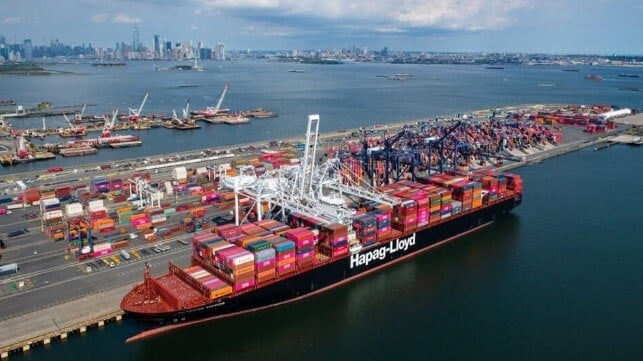Operations Resume at U.S. East/Gulf Coast Ports After ILA Strike

Within hours of the tentative agreement on the wage portion of the International Longshoremen’s Association contract, ports along the U.S. East and Gulf Coast began implementing their predetermined restart plans following the strike. Experts differ on how long it will take to fully recover and the potential for a ripple effect around the globe, but a key hurdle has been cleared. The next challenge is the negotiations on thorny issues such as automation and benefits with the deadline extended to January 15, 2025.
“Closing all ports on the U.S. East Coast and Gulf Coast – even for just three days – comes with severe consequences,” said well-known analyst Peter Sand of Xeneta. “We must now wait to see how quickly the returning workers are able and willing to deal with the huge backlog of ships waiting to offload thousands of containers carrying billions of dollars of goods.”
Sand believes the ripple effect of the strike will spread across global supply chains in the weeks to come. However, others believe it will clear quicker as most of the ports had suspended operations for just three of four days with some terminals opening this weekend and extended hours expected next week to help clear the backlog.
Counts vary but it is between 40 and 50 ships that were waiting offshore at the U.S. ports. Some vessels however were also holding overseas or in places such as the Bahamas. Xenteta notes that as many as 120 more vessels are sailing toward the U.S. ports.
CMA CGM issued an update to customers saying that vessels will be serviced on a “first come – first serve” basis at the terminals. Bethann Rooney, port director at the Port Authority of New York and New Jersey which oversees the third busiest port in the U.S. and the largest on the East Coast, said they had been in touch with local authorities and could prioritize vessels if there was a shortage of a commodity or manufacturing supplies. However, she said so far, no shortages have been identified to prioritize vessels.
Savannah, Georgia reported Friday morning that ships had already docked. They said cargo was moving and that operations would continue to scale up.
At New York and New Jersey, Rooney said 19 containerships were at anchor with a total of 35,000 TEU as well as four vehicle carriers and one specialty ship. She said the Coast Guard, the pilots, and the tugs were coordinating and that ships were beginning to come back to docks with 11 expected to move from the anchorage. New York – New Jersey will start discharging boxes at 7 p.m. Friday and will “go around the clock,” to move containers.
Rooney said there were 21,000 containers left on dock when the strike began Monday night and that they need to move as well as the 35,000 TEU now incoming. Two terminals will be open this weekend with the remainder back in service Monday morning. There were approximately 1,000 reefer boxes on dock but they do not expect any spoilage due to the short duration of the work stoppage.
“We should be able to recover very quickly,” Rooney told a media briefing noting that the NY-NJ port typically handles more than 400,000 boxes a month. She said the current volume is “less than one week of activity.” She also highlights the port has experience as it has been closed in the past for a few days due to winter storms and longer during Superstorm Sandy or after the 9/11 attack.
President Joe Biden and Acting Secretary of Labor Julie Su both issued statements highlighting that collective bargaining had worked. They applauded the efforts, quick agreement, and recognition of the vital contribution of the dockworkers.
Sources told CNN that the settlement is for $4 per hour in wages annually which amounts to about 10 percent increases for each of the six years of the contract. The total $24 increase is 62 percent for the life of the contract. They are saying the strike amounted to the difference between a $ 3-an-hour offer from USMX and a minimum of $4 set by the union.
The plan is that the two sides will return to the negotiating table to resolve the remaining issues with the Master Contract extended to January 15. They will still have to tackle the ILA demand for no automation. Asked about the current level of automation, Rooney said there is no full automation in the Port of New York and New Jersey currently.
USMX proposed continuing the current contract terms on automation. That calls for a committee including union representatives to review any request from the terminal operators for any automation systems.
